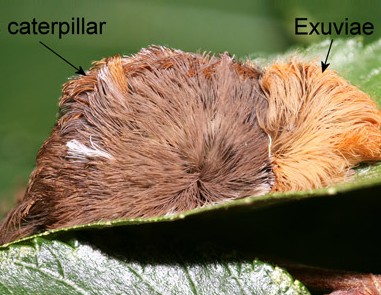

There have been a lot of news stories lately about what’s known as the Puss caterpillar. Simply touching this little creature can send you to the hospital in excruciating pain. It is considered the most venomous caterpillar in the United States.
The nature of the venom is such that it is extremely painful and irritating. There are reports that people hurt for hours on end – not just on the skin but even deep into the bones or radiating down limbs. Although it initially feels similar to a bee sting, the pain seems to get way worse before it starts to get better.
What is it?
It has been described as anything from a “crawling shag carpet” to “a tiny crawling piece of Donald Trump’s Hair”. It is tan in color and looks like a little furry caterpillar with a tail. Because it is furry and a little cute looking, many mistakenly believe that it’s OK to touch. Unfortunately, it’s not fur that’s covering the caterpillar – what’s covering the caterpillar are little barbed spines covered in toxins.
The scientific name for the puss caterpillar is Megalopyge Opercularis. The Greek root words can be loosely translated as “large rump”, which does help explain what this creature looks like. It’s also known as the tree asp, puss moth, wooly slug and asp caterpillar.
Where is it found?
Although found in the Southeast corner of the United States and up the East coast, due to the increased numbers of sightings and stinging incidences, officials in both Florida and Texas have issued warnings to all residents.
They like to dwell in trees such as oak, citrus, sycamore and elm trees. Due to plentiful food and water, they’re being reported in greater numbers in 2014 than in previous years.
What to do when you see it!
Avoid it if at all possible. However, there are reports that these caterpillars can drop from the trees on an unsuspecting passersby.
Should you happen to get stung, it’s important to get the barbed spines out of your skin as soon as possible. You can do this by taking some duct tape or cellophane tape and covering the affected area. Using a quick ripping motion to pull the tape away from the skin should also remove the spines from under the skin. You may have to do this multiple times. Other treatment options being reported as helpful include ice, Benadryl or a baking soda paste.
The person who was stung will need to be watched carefully for severe reactions that include vomiting, convulsions or fainting spells.
The good news is that pesticide treatments are affective against the puss caterpillar, so if you do see them in your backyard or around your home, you might want to call for help!
